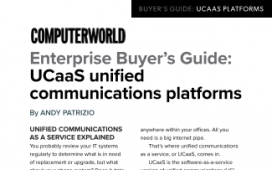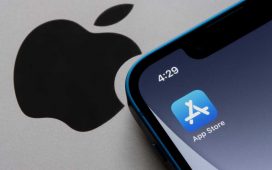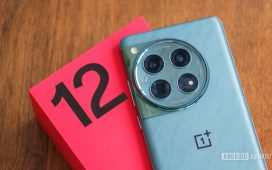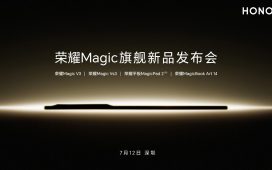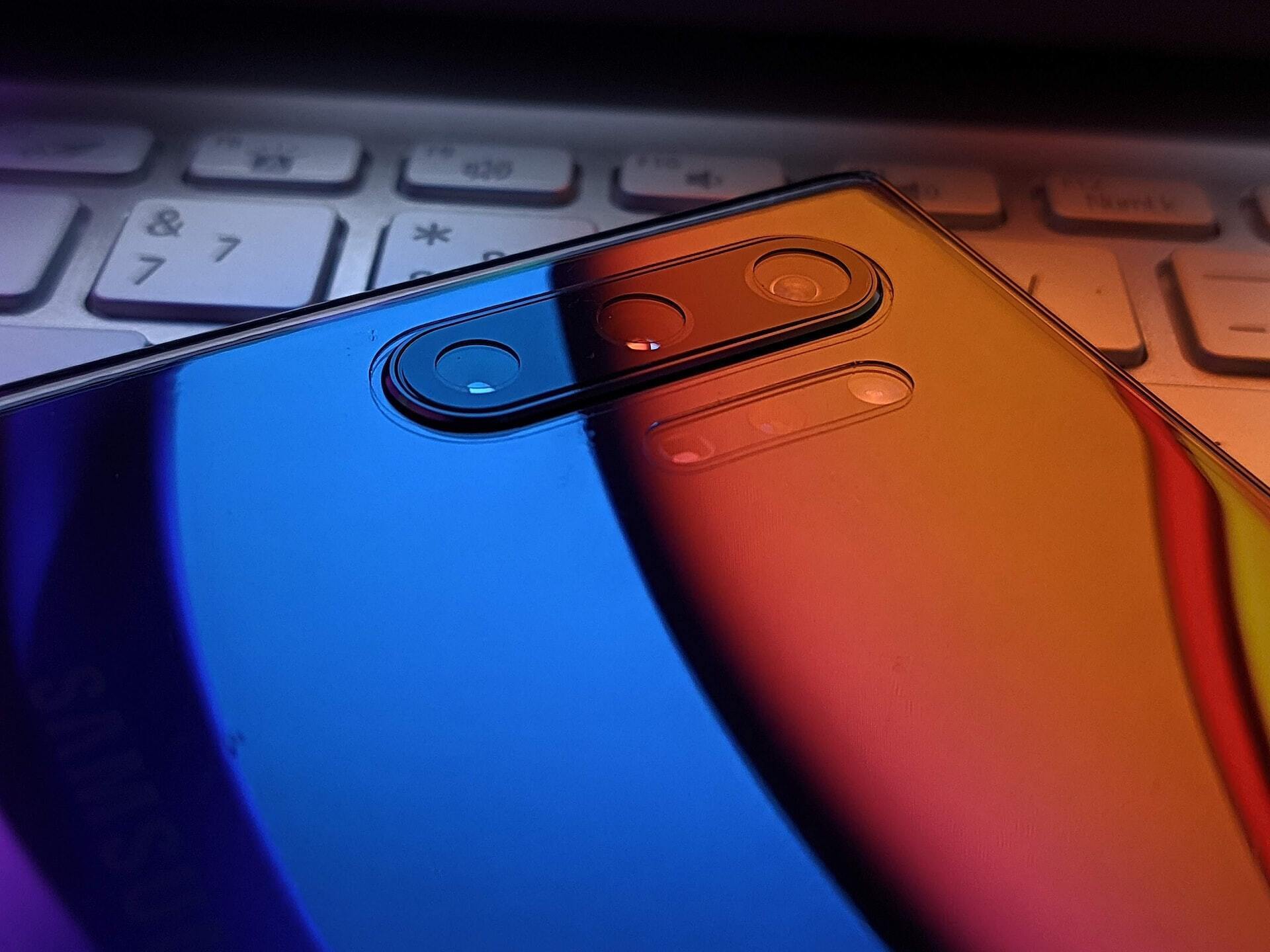
- Android version: Your UEM platform or corporate apps and cloud services may require a minimum version of Android to function correctly or to comply with their security standards.
- RAM and storage capacity: Some devices offer minimal capacity to offer a cheap price. But that can hamper performance, especially for personal/work separation. A good minimum for corporate-issued devices is 8MB of RAM and 64GB of storage, to provide sufficient capacity for running multiple apps and switching among them with no performance hit. (Google’s official minimum is 3MB of RAM and 32GB of storage to support Android Enterprise.)
- Multiple-SIM support. People who work in multiple countries or must use their own SIM card for personal use and a corporate one for business use should use devices that offer two SIM trays or use, where carriers support them, eSIMs that are stored digitally on the devices. Expect to find differences in multi-SIM support even for the same model phone across countries and carriers, so purchase carefully to ensure you have all the needed variations.
- Some users work in tough environments where you’ll want tougher phones better able to withstand changes in air pressure, humid and wet conditions, heat and cold, and drops, bangs, and scrapes. That could mean using ruggedized devices, buying ruggedized cases for common devices, or avoiding devices with characteristics, like very thin materials or folding screens, that are more likely to be damaged. For maximum durability, ruggedized phones or cases should conform to the American Mil-Std-810G standard or the newer Mil-Std-810H standard.
Vendor considerations for Android devices around the world
Regional differences in vendor sources can be a factor in the devices IT chooses to provide and/or support. Those differences can both steer local companies to specific Android phone vendors and require multinational companies to consider such variations when formulating their approved-device lists for employee-liable devices and in the choice of corporate-liable devices they furnish.
In addition to Apple, there are 14 current Android vendors with 1% or more usage share in at least one region: Google, Honor Device, Huawei, Infinix Mobility, Itel Mobile, Lenovo-owned Motorola Mobility, Nokia, OnePlus, Oppo, Realme Chongqing Telecommunications, Samsung Electronics, Tecno Mobile, Vivo Mobile Communication, and Xiaomi. Although LG discontinued its Android business in July 2021, enough devices are still in use to show up in usage charts, most notably in South America, and so they may still need IT support.
Business purchase and BYOD patterns for Android
Usage share in business, versus overall consumer usage, is likely to skew more toward the major vendors, but data on enterprise mobile market share — whether for corporate-provided or BYOD devices — is not available even from IDC, which specializes in tracking installed-product market share across a wide range of enterprise categories.
Still, IDC analyst Kiranjeet Kaur notes that in much of the world, businesses other than multinational companies struggle to justify the expense of purchasing Samsung’s enterprise-class Android Secured by Knox phones and Apple iPhones — or, where available, even Motorola’s slightly less expensive Edge Fusion and Ultra phones or Google’s Pixel phones — for anyone but executives. So their IT organizations tend to issue adequately securable Android phones from broad-market vendors that offer models across a wider range of prices. Such Android vendors are also more likely to have business-oriented marketing and sales teams in key markets than the other Android vendors, she adds.
I classify OnePlus, Oppo, and Xiaomi (and Nokia in East Africa and Sony in Japan) as broad-market vendors that offer at least some business-appropriate models. Google, Motorola, and Samsung also offer sub-enterprise models for broad-market business use.
In most of the world, individuals who use their own phones for work — BYOD users — typically pick the cheaper Android phones, because in most markets the enterprise-class devices simply are unaffordable. In many rich countries like Australia, Canada, Japan, New Zealand, Norway, Saudi Arabia, Sweden, Switzerland, the UK, and the US, both IT and individuals favor enterprise-class devices from Apple and Samsung. But in much of Europe — including rich countries like Austria, France, Germany, Italy, and the Netherlands — the mix is broader than Apple and Samsung, with lower-cost, more consumer-focused Android vendors like Xiaomi having significant traction among users overall.
IT organizations — especially in multinational companies — tend to avoid the low-cost Chinese vendors often favored by individual consumers in many parts of the world for price reasons. Why? Because on those low-cost devices, “the app experience can be shaky and can’t implement features properly, or apps don’t install properly,” IDC’s Kaur says. That poor quality for the only devices many employees can afford does pose a challenge for IT when supporting BYOD.
I classify Honor, Infinix, Itel, Realme, Tecno, and Vivo as vendors of Android phones that are iffy for business use around app compatibility. And I advise against Huawei devices due to longstanding concerns over Huawei’s alleged spying, as noted earlier.
Where IT will encounter the major Android vendors
Samsung and Apple are the major phone vendors in nearly every market, which combines with their higher security capabilities to make them standard devices in multinational companies.
However, South Korea-based Samsung has very little usage share in China, whose government policies favor Chinese vendors and where Samsung’s China Android business strategy failed due to Samsung’s own mistakes. Samsung’s share in Japan is also quite low, as it has been for more than a decade. US-based Apple has very little share in India, largely around cost but also due to the government’s Make in India policies that favor products made in India; in 2017, Apple started making iPhones in India due both to that pressure and to seek a manufacturing alternative to China, where the vast majority of its devices are still made.
Some regions have major vendors not seen widely or at all elsewhere. For example:
- Tecno and Infinix have sizeable usage shares in Africa, and both have increasing shares in some Asian countries and in Latin America.
- Motorola is significant in South America and has pockets of adoption in Europe.
- Huawei is significant in Africa, Mexico, China, India, and parts of Southeast Asia, but overall it has lost about half its market in two years.
- Oppo, Realme, and Vivo have notable presences in much of Asia and in parts of the Middle East.
- Xiaomi is a significant vendor in much of the world — especially in Asia, Europe, Mexico, the Middle East, and South America — but is barely present in the US, Canada, and Oceania.
By contrast, some well-known names don’t have significant presence outside a handful of markets, falling below the 1.0% threshold globally:
- Google’s Pixel devices have little global usage share but have shown growth in developed countries, topping out in New Zealand at 12.4%, followed by Japan at 5.4% and by Canada at 5.1%, with lower presence in Australia, the UK, and the US, as well as in several European countries.
- The well-reviewed OnePlus devices have minor usage share globally, though they are found in various countries across the world, including China, India, Israel, Norway, and Sweden.
- Chinese manufacturer Honor has a notable presence in a handful of countries — including China, Czechia, Mexico, Peru, Russia, and several Central American countries — but it is essentially invisible globally. It also uses its own MagicOS, based on Android 14 and proprietary apps, leaving broad compatibility a question mark.
The tables below, all based on usage data from StatCounter (based on web access from devices), show which mobile phone vendors have 1% usage share or more across various regions, highlighting the major vendors in each. It also shows the shares of those vendors in select countries in each region, showing the diversity within each region that could affect IT support decisions.
Although the data is from April 2024, the percentages have been fairly stable for several years, with the greatest variations among those with the smallest percentages, which often move around in that large bottom tier.
Global mobile usage share
| ≥1% | Apple | Samsung | Xiaomi | Oppo | Vivo | Realme | Huawei | Motorola | Tecno |
| Worldwide | 28.0 | 24.0 | 11.4 | 5.7 | 5.0 | 3.5 | 3.5 | 2.3 | 1.6 |
Africa mobile usage share
| ≥1% | Samsung | Tecno | Apple | Huawei | Infinix | Xiaomi | Oppo | Itel | Realme |
| All Africa | 30.6 | 12.9 | 12.4 | 7.3 | 7.2 | 6.4 | 4.8 | 4.9 | 1.7 |
| Ethiopia | 46.8 | 19.0 | 4.3 | 4.7 | 10.2 | 1.3 | — | 3.7 | — |
| Ghana | 22.7 | 20.9 | 16.3 | 5.9 | 13.0 | 1.7 | — | 8.2 | — |
| Kenya | 22.8 | 17.9 | 3.4 | 2.8 | 9.0 | 4.2 | 6.7 | 3.0 | 5.6 |
| Morocco | 34.3 | 1.4 | 16.4 | 7.3 | 4.6 | 19.3 | 4.4 | — | 1.9 |
| Nigeria | 11.2 | 26.2 | 8.4 | 3.6 | 21.8 | 3.6 | 3.0 | 6.4 | — |
| Senegal | 37.4 | 22.0 | 22.0 | 3.4 | 1.5 | 2.8 | 1.0 | 3.0 | — |
| South Africa | 50.9 | — | 16.0 | 13.4 | — | 3.7 | 3.5 | — | — |
Asia mobile usage share
| ≥1% | Apple | Samsung | Xiaomi | Oppo | Vivo | Realme | Huawei | OnePlus |
| All Asia | 20.0 | 19.1 | 14.2 | 9.2 | 9.1 | 5.9 | 3.7 | 1.7 |
| China | 22.4 | 1.3 | 13.0 | 5.8 | 6.4 | — | 20.6 | 1.4 |
| Hong Kong | 48.2 | 29.5 | 8.5 | — | 1.1 | — | 3.8 | — |
| India | 4.0 | 13.8 | 20.7 | 11.5 | 18.0 | 13.2 | — | 4.6 |
| Indonesia | 11.4 | 17.0 | 15.2 | 17.5 | 13.0 | 7.1 | — | — |
| Japan | 60.2 | 7.5 | 4.3 | 2.3 | 1.1 | — | 2.1 | — |
| Malaysia | 30.7 | 15.0 | 10.9 | 11.8 | 10.3 | 5.2 | 12.0 | — |
| Pakistan | 4.4 | 15.4 | 6.6 | 12.2 | 12.9 | 3.6 | 4.6 | — |
| Philippines | 15.7 | 13.4 | 10.0 | 13.8 | 12.4 | 11.6 | 5.8 | — |
| Singapore | 33.0 | 22.8 | 5.5 | 4.8 | 1.7 | 1.0 | 2.4 | — |
| South Korea | 26.8 | 67.6 | — | — | — | — | — | — |
| Taiwan | 57.2 | 20.8 | 3.6 | 6.2 | 2.3 | — | — | — |
| Thailand | 31.9 | 20.6 | 6.8 | 14.4 | 13.3 | 4.9 | 2.4 | — |
| Vietnam | 33.1 | 26.1 | 9.6 | 17.9 | 6.1 | 3.5 | — | — |
Central America and Caribbean mobile usage share
(Selected countries — no overall regional roundup data is available.)
| ≥1% | Samsung | Apple | Huawei | Motorola | Xiaomi | Honor | LG* |
| Costa Rica | 25.0 | 26.5 | 6.4 | 5.1 | 10.7 | 5.3 | — |
| Dominican Rep. | 27.9 | 34.3 | 2.0 | 3.2 | 8.8 | — | 3.5 |
| Guatemala | 40.1 | 21.7 | 4.6 | 8.3 | 11.1 | 5.8 | — |
| Jamaica | 45.4 | 43.4 | — | 1.5 | 1.3 | — | — |
| Panama | 34.9 | 20.2 | 5.8 | — | 14.5 | 8.4 | — |
*LG no longer sells Android devices; this reflects old devices still in use
Europe mobile usage share
| ≥1% | Apple | Samsung | Xiaomi | Huawei | Oppo | Motorola | Realme | |
| All Europe | 32.1 | 30.9 | 14.2 | 3.8 | 2.7 | 2.3 | 1.6 | 1.3 |
| Austria | 38.5 | 32.9 | 7.5 | 4.3 | — | — | — | — |
| Czechia | 25.0 | 26.3 | 21.9 | 4.6 | — | 2.8 | 3.0 | — |
| France | 29.1 | 31.7 | 13.9 | 4.0 | 3.6 | — | — | 1.2 |
| Germany | 34.0 | 33.8 | 10.9 | 3.5 | 1.2 | 1.0 | — | 1.6 |
| Greece | 13.0 | 29.3 | 32.0 | 6.2 | — | 1.0 | 2.4 | — |
| Italy | 29.3 | 29.5 | 14.1 | 4.3 | 5.5 | 2.2 | 2.1 | 1.1 |
| Netherlands | 38.7 | 35.6 | 6.1 | 2.1 | 2.8 | 1.4 | — | 1.0 |
| Norway | 61.7 | 24.0 | 1.6 | 1.9 | — | 1.4 | — | 1.2 |
| Poland | 13.8 | 33.2 | 22.6 | 4.3 | 3.6 | 7.7 | 5.5 | — |
| Portugal | 30.1 | 29.2 | 15.6 | 4.7 | 4.5 | — | — | — |
| Romania | 25.2 | 43.2 | 8.5 | 6.1 | 3.0 | 4.4 | — | — |
| Russia | 29.4 | 17.3 | 21.5 | 4.8 | 1.3 | — | 6.0 | — |
| Spain | 20.3 | 27.6 | 28.7 | 3.8 | 6.9 | 1.0 | 1.9 | — |
| Sweden | 55.7 | 27.9 | 2.9 | 1.7 | — | 1.4 | — | 1.2 |
| Switzerland | 51.0 | 27.4 | 4.7 | 2.5 | 2.3 | — | — | 1.2 |
| Ukraine | 29.1 | 19.0 | 27.8 | 2.4 | 2.7 | 2.0 | 2.1 | — |
| United Kingdom | 49.2 | 30.1 | 2.1 | 4.4 | — | 2.8 | — | 3.1 |
Middle East mobile usage share
(Selected countries — no overall regional roundup data is available.)
| ≥1% | Samsung | Apple | Xiaomi | Huawei | Oppo | Vivo | Realme | Infinix |
| Egypt | 25.2 | 11.8 | 13.2 | 8.0 | 18.5 | 2.2 | 10.0 | 4.1 |
| Israel | 49.8 | 25.8 | 15.9 | — | — | — | — | — |
| Saudi Arabia | 19.6 | 34.2 | 8.8 | 5.1 | 4.6 | 6.0 | 4.1 | 3.6 |
| Türkiye | 17.1 | 18.9 | 11.9 | 3.3 | 2.0 | — | — | — |
| UAE | 22.8 | 19.5 | 17.6 | 3.9 | 8.5 | 5.4 | 5.1 | 2.2 |
North America mobile usage share
| ≥1% | Apple | Samsung | Motorola | Xiaomi | |
| All North America | 54.8 | 25.1 | 4.6 | 2.9 | 2.1 |
| Canada | 61.0 | 24.2 | 1.5 | 5.1 | 1.1 |
| Mexico | 23.2 | 22.9 | 15.2 | — | 11.7 |
| United States | 56.5 | 25.2 | 4.3 | 3.0 | 1.4 |
Oceania mobile usage share
| ≥1% | Apple | Samsung | Oppo | Xiaomi | Huawei | Motorola | |
| All Oceania | 53.9 | 27.4 | 6.0 | 2.9 | 1.2 | 1.0 | 1.0 |
| Australia | 57.4 | 25.8 | 5.0 | 2.6 | 1.3 | — | 1.1 |
| Fiji | 16.9 | 66.9 | — | 2.1 | 2.6 | 1.5 | — |
| New Zealand | 41.9 | 32.4 | 12.4 | 4.3 | — | 1.7 | — |
South America mobile usage share
| ≥1% | Samsung | Motorola | Apple | Xiaomi | Huawei | LG* | Tecno |
| All South America | 36.2 | 16.8 | 16.1 | 14.4 | 1.7 | 1.4 | 1.3 |
| Argentina | 50.6 | 26.1 | 10.0 | 4.7 | — | 1.8 | — |
| Brazil | 34.9 | 18.3 | 18.4 | 14.5 | — | 1.8 | — |
| Chile | 31.5 | 9.0 | 22.1 | 14.2 | 4.9 | 2.0 | — |
| Colombia | 24.6 | 12.2 | 22.3 | 20.6 | 4.9 | — | 1.5 |
| Peru | 31.0 | 9.5 | 10.2 | 24.0 | 7.4 | 1.3 | — |
*LG no longer sells Android devices; this reflects old devices still in use
Vendor considerations for front-line Android devices
For specialty uses — such as ruggedized devices in the field or special-purpose devices in retail and logistics — there’s a different set of front-line Android vendors for what Google calls dedicated devices. Zebra Technology, Motorola, Kyocera, and Honeywell are perhaps the most well-known, but there are many others.
These devices are typically provided as an integrated solution, combining specific hardware devices with required specialty features like scanners and a software or cloud suite customized for the enterprise’s tasks, such as inventory management in retail, shipment tracking in logistics, medication distribution in healthcare, or sensor reading in utilities.
As you can see at Google’s Android Enterprise Recommended tool, these front-line devices tend to use older versions of Android than consumer and knowledge-worker devices do, largely because of the customizations made. As with most special-purpose gear, stability is critical, so having a flow of feature updates can be a negative, unlike for general-purpose usage.
This article was originally published in October 2022 and updated in June 2024.


